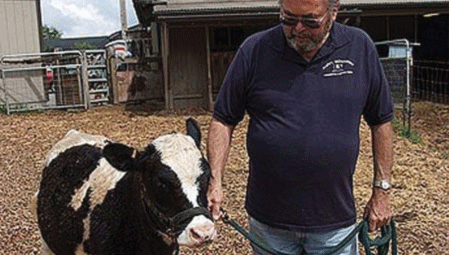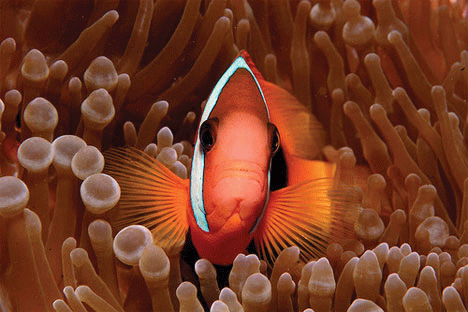Are Mini “Teacup Cattle” the Answer to Sustainable Meat?
The connection between beef and climate change is already well documented. And while some may tout grass-fed cattle as a partial solution to cattle-related greenhouse gas emissions, there’s no doubt that the laws of entropy, combined with the inevitable methane emissions from ruminants, make truly sustainable meat rearing a tricky issue indeed. But here’s a somewhat surreal idea I’d never thought about before?if cows are such a big problem, why don’t we just make them smaller?
The idea is not as weird as it sounds. Christine has already explored the concept of Bonzai cattle as a spin-off benefit of shrinking people. And she’s not alone. According to the Guardian, many US farmers are ditching large cattle in favor of smaller, more sustainable breeds. In many ways it’s a reversal of a trend that’s been going on for decades, with farmers breeding ever larger, hungrier cows. But, says the Guardian, smaller cows, and we do mean smaller? some, known as “teacup cattle” are only 36 inches tall?are becoming increasingly popular. Not only do they need less land to range on, but they produce more meat with less feed too:
“Since the 1940s, US farmers have been breeding cows for size, making them much larger than their British cousins. But with Gradwohl’s farm being swallowed up by rising taxes, he had to give up 60 acres of land. He discovered that it is possible to raise 10 miniature cows on five acres, rather than just two full-sized cows, meaning that land could yield up to three times as much beef – but the cows only need one third of the feed.”
I guess bigger is not always better.
Ocean Acidification Changing Fishes’ Sense of Smell, Predators’ Scent Becomes Irresistible
As the ocean absorbs more of the carbon dioxide we’re pumping into the atmosphere, its chemistry changes and it is becoming much more acidic. This ocean acidification is causing problems from blea-ching coral reefs to altering the make-up crustacean’s shells. But for the first time, scientists are finding that it is also playing havoc with fishes’ sense of smell. More acidic oceans is making it harder for fish to smell when predators are nearby,making them more likely to end up as prey.
According to the Telegraph, marine biologists have found that fish growing up in water with high levels of CO2 are not only unable to smell predators, but are sometimes even attracted to their scent. The younger fish tend to take greater risks like swimming farther from shelter, and biologists worry that fish populations could further decline as oceans become more acidic.
To test their findings, researchers looked specifically at clown fish and damselfish larvae in a lab. After just a few days living in water with heightened CO2 levels, the fish had marked changes in their ability to smell and when given the choice of two flow chambers — one with and one without the scent of predators — the fish larvae spent 93% of their time in the flow with the predator’s scent. Fish that were not exposed to acidic water avoided the flow that carried the scent of predators.
What’s worse, when the fish were released, those that were raised in the acidic water had mortality rates between five and nine times higher than fish raised in normal water. Though the exact reason why the heightened CO2 changes a fish’s ability to detect predators or causes them to be attracted to their smell, the riskier behavior exhibited could mean various fish species will struggle to survive as oceans acidify.
Shared by TreeHugger, an online media outlet dedicated to driving sustainability mainstream







